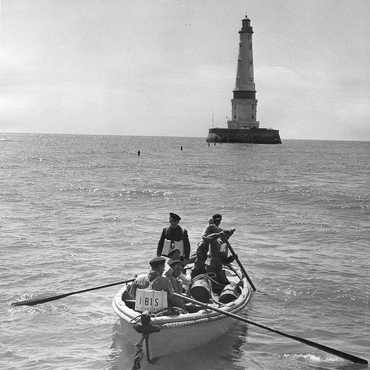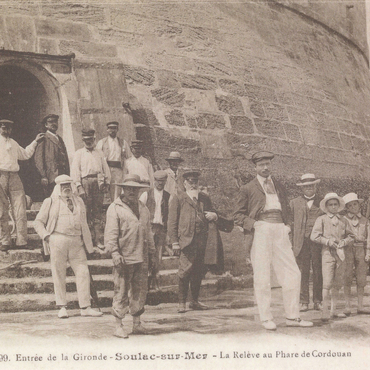
- Home
- Just another lighthouse ?
- The lighthouse keepers
- Changing of the guard
The same exact ritual was repeated every Friday. A lighthouse keeper arrived at the lighthouse and marker subdivision office in Verdon-sur-mer with his provisions. He boarded the tender for the thirty-minute crossing. Currents and sandbanks could block the approach to the lighthouse. The tender would come to a halt. The keeper would then get into a launch that allowed him to get as near as possible to the lighthouse, sometimes even to the door at neap tide. The other keepers waited for their colleague on the peyrat and loaded the provisions onto a trolley, exchanging them with the previous ones. The trolley was then hoisted up to the tower with a winch. The ritual took place without haste, but also without any losing time, as the tide could go out and expose the sandbanks, or the weather could change. In the eighteenth century the length of a guardian’s watch was three months. This was reduced over time, and today it is two weeks, followed by one or two weeks' shore leave. The popular imagination retains the spectacular changing of the guard in such beacons as the Iroise lighthouse, which took place using a pulley system known as a ballon. In Cordouan’s case, it was perhaps less visually dramatic, but not necessarily less tricky, or even dangerous. On two occasions, in 1849 and 1922 the launch transporting the keepers capsized, resulting in the deaths of nine people.
